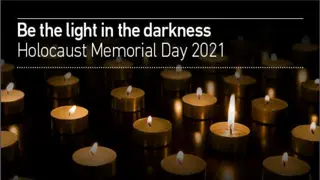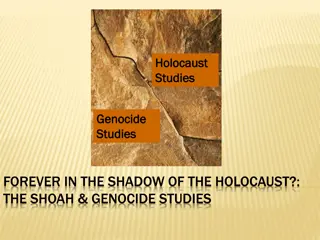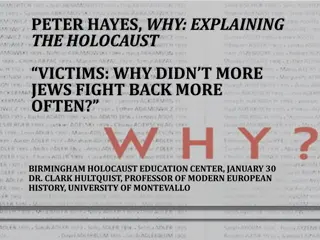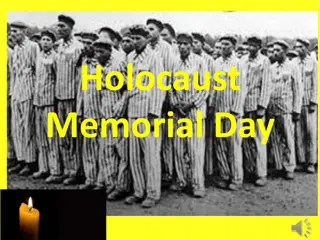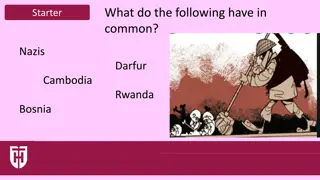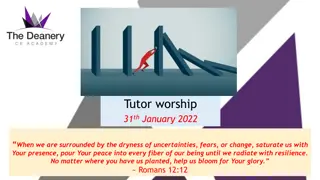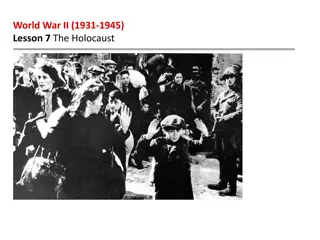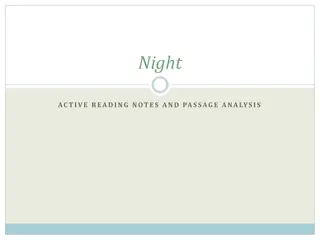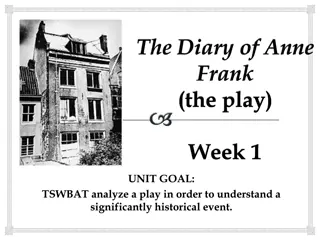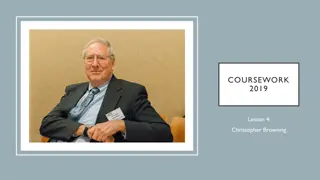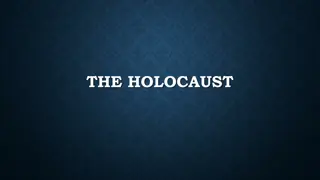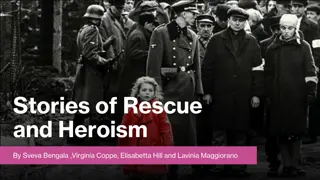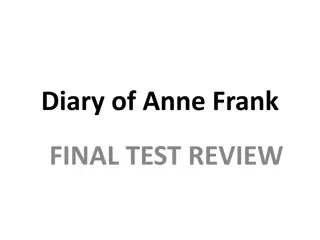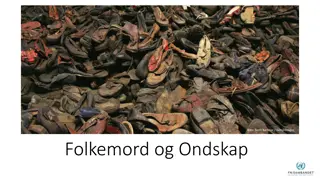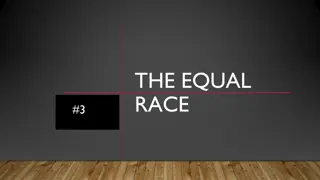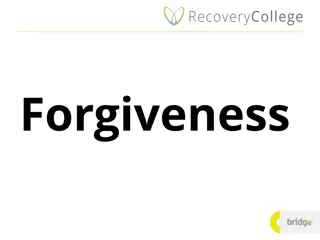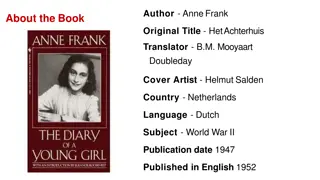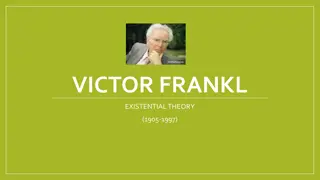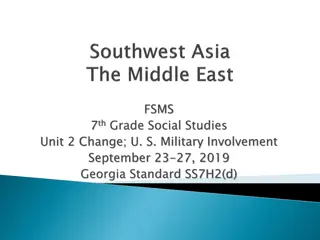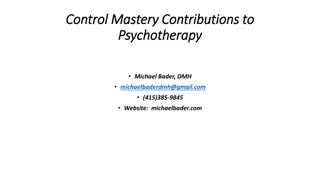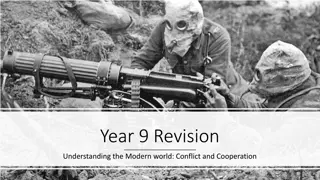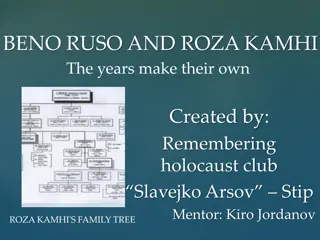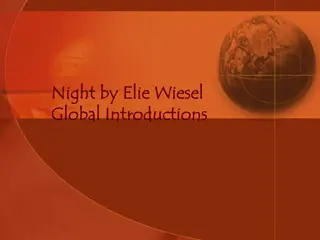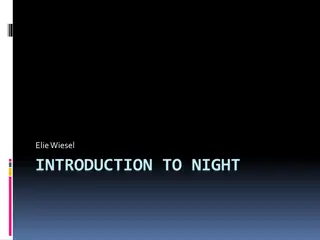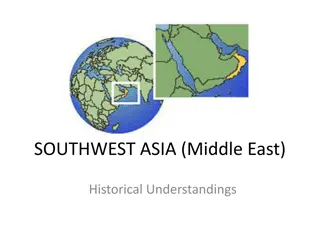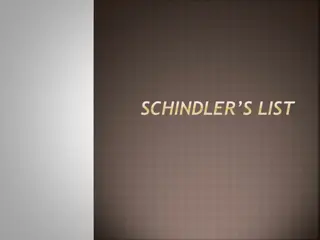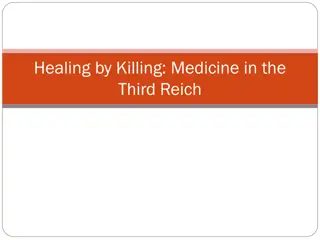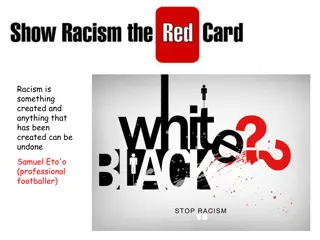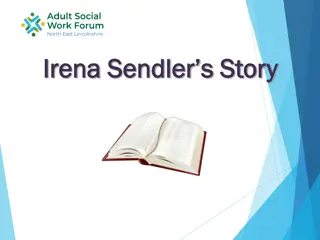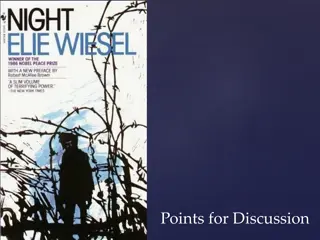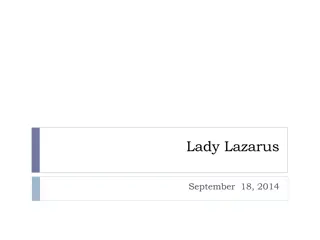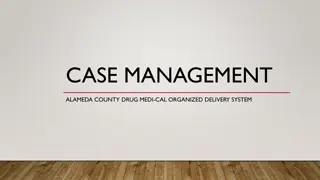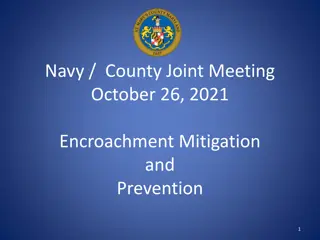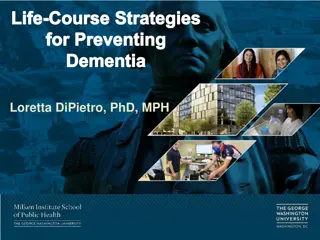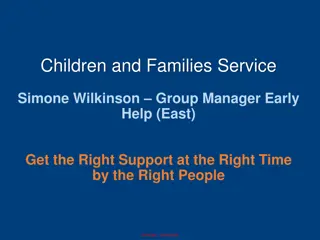The Holocaust: A Comprehensive Overview
The Holocaust was a tragic chapter in history where millions of Jews and other groups were targeted and persecuted by the Nazi regime during World War II. This summary covers key events such as the rise of the Nazi party, establishment of concentration camps, Nuremberg Laws, and the Final Solution. Hitler's anti-Semitic beliefs and intentions, along with the timeline of events leading to the genocide, are highlighted. The impact of the Holocaust on European Jews and the world is profound, with lasting effects on society and international relations.
Download Presentation

Please find below an Image/Link to download the presentation.
The content on the website is provided AS IS for your information and personal use only. It may not be sold, licensed, or shared on other websites without obtaining consent from the author. Download presentation by click this link. If you encounter any issues during the download, it is possible that the publisher has removed the file from their server.
E N D
Presentation Transcript
The Holocaust By Rachel Belsky, Steve McManus, and Sam Benner
The Holocaust Genocide of European Jews by the Nazi Germans Holocaust during WWII is most prominently known, although there were many Holocausts 1933 - 9 million Jews in Europe 1945 - 3 million Jews in Europe left Other groups were attacked besides Jews - Roma (Gypsies), Homosexuals, Poles, Soviet POWs, Jehovah s Witnesses, mentally and/or physically disabled, Communists 1948 - 1951: 700,000 Jews emigrated to Israel, as well as the United States and other nations
Hitler & Intentions Hitler, head of the Nazi party during WWII, blamed the Jews for Germany s problems In his mind, solution to Germany s problems was to drive the Jews out of Germany Although not blonde haired, blue eyed himself, Hitler classified blonde, blue eyed people as the superior race and the only race that would represent Germany When Jewish emigration from Germany didn t progress as much as he would like, his intentions became to turn the Holocaust into a massive genocide The United States did not intervene as they remained isolationists due to the Depression that occurred several years earlier
Timeline 1933 Nazi party gained power First concentration camp established in Nazi Germany at Dachau 1934 Hitler declared himself president and chancellor of 3rd Reich 1938 Kristallnacht: Nazi organized nation-wide pogroms - burned hundreds of synagogues and looted and destroyed many Jewish homes, schools, and community offices All Jewish children expelled from German schools and could only attend separate Jewish schools 1939 Germans forced Jews in Poland to wear a yellow Star of David 1942 German government closed all Jewish schools All Jews in concentration camps in Germany sent to Auschwitz Yellow star Jews had to wear as an identifying patch Final Solution took place: murder of Jews of Europe by gassing, shooting, and other means 1945 Nazis started death marches
Nuremburg Laws 1935 - Hitler and Nazi Party stripped Jews of their civil rights Nuremberg Laws separated Jews from the Germans completely Germans began using ancestral race and family roots instead of religious practice to define Jews If someone in your family was at all Jewish you were defined and treated as a Jew Laws forbade the marriage between Jews and non Jews Hitler warned the Jews in his speech that if this did not resolve the problem they would have to resort to a Final Solution U.S. could have saved millions of lives but instead remained isolated
Ghettos Enclosed city districts in which the Germans forced the Jewish population Ghettos isolated Jews by separating Jewish communities from non-Jewish populations and neighboring Jewish communities Nazis established over 400 ghettos Germans created ghettos to control and segregate Jews 1942 - Germans destroyed ghettos and deported Jews to extermination camps where they killed them Ghettos were closed off by walls, barbed-wire fences, or gates Ghettos were extremely crowded and unsanitary Repeated outbreaks of diseases and high death rates because of starvation, chronic shortages, and severe winter weather Jews carrying bundles of possessions before their deportation from the Kovno ghetto, Lithuania, October 1943 Warsaw Ghetto - largest ghetto in Poland where 450,000 Jews were crowded into an area of 1.3 square miles Nazis ordered Jews to wear identifying badges or armbands and also required many Jews to perform forced labor for the German Reich Members of the Jewish resistance staged armed uprisings
Word From the Ghetto Jan Karski (1914-2000) 1942 - Jan Karski sent to London and Washington to inform them of what Germany was capable of (military wise) and the destruction of the Jews London, 1942 - Karski met with Foreign Secretary Anthony Eden and Lord Selborne who was in charge of anti-Nazi movements He [Selborne] didn t believe me. Those people honestly don t believe me. They thought I was exaggerating out of hatred of the Germans. That this was just propaganda. Washington, 1943 - Karski met with Supreme Court Justice Felix Frankfurter I must say that I m unable to believe what you told me. July 28 - FDR summoned Karski to White House Karski said, He asked questions, questions, but not a single question about the Jews. I realized he did not want to speak about the subject. Jan Karski (1942) You will tell the leaders we shall win this war! You will tell them that the guilty ones will be punished. Justice and freedom shall prevail. You will tell your nation that they have a friend in this house.
Night Elie Wiesel The train full of deportees had crossed the Hungarian frontier and on Polish territory had been taken in charge by the Gestapo. There it had stopped. The Jews had to get out and climb into lorries. The lorries drove toward a forest. The Jews were made to get out. They were made to dig huge graves. And when they had finished their work, the Gestapo began theirs. Without passion, without haste, they slaughtered their prisoners. Each one had to go up to the hole and present his neck. Babies were thrown into the air and the machine gunners used them as targets Through long days and nights, he went from one Jewish house to another, telling the story of Malka, the young girl who had taken three days to die, and of Tobias, the tailor, who had begged to be killed before his sons People refused not only to believe his stories, but even to listen to them. He told me his story and that of his companions.
Concentration Camps Deportees usually not given food or water for the journey Suffered from overcrowding Endured intense heat during the summer and freezing temperatures during the winter No sanitary facility except a bucket Many of the deportees died before the trains reached their destinations because of lack of food and water Accompanied by armed police guards who had orders to shoot anyone who tried to escape People were forced to march when trains were not available and the distances were short Germans attempted to disguise deportations as a "resettlement" of the Jewish population in labor camps in the "East. December 1941 - July 1942: Nazis established extermination camps in occupied Poland Extermination camps aka death factories created for mass murder of people About 8,000 Jews gassed daily at extermination camps
Kristallnacht Crucial turning point in German policy regarding Jews Considered actual beginning of Holocaust Set of anti-semitic laws were passed which were to Aryanize German economy Over 191 synagogues set afire and 76 destroyed More than 7,500 Jewish businesses looted and over 800 ruined Almost 100 Jews were killed or seriously injured 30,000 Jews rounded up and sent to concentration camps Burning of a synagogue during Kristallnacht The Jewish communities of Germany were assessed one billion marks to pay for the damage claims of non-Jews
Nuremburg Trials Nuremberg, Germany Took place from 1945-1946 Those responsible for crimes committed during Holocaust were brought to trial after war Judges from Allied countries Great Britain, France, Soviet Union, and the U.S. presided over hearings of 22 major Nazi criminals Twelve Nazis sentenced to death Most defendants admitted to crimes of which they were accused but most claimed they were simply following orders of higher authority Individuals directly involved in killings received most severe sentences Others who played key roles in Holocaust received short prison sentences or no penalty at all
Discussion Questions What should U.S. action have been? What did we know? Why did we respond the way we did?


